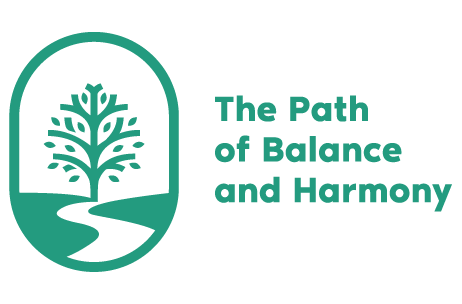QiGong - Exercises for Health
Move Well
CleaningBurn Energy
StrengtheningBuild Energy
QiGong (also spelt chi kung) is the Chinese name for remedial healing movements, similar to Tai Chi Chuan, Yoga, Pilates and western stretching exercises.
Lifelong tools to resolve pain, rehabilitate injuries and generate health.
There are 3 levels of depth in these courses:1. Specific areas of the body (Individual stretching courses)
2. The whole musculoskeletal system (Shaolin Stretching Course)
3. Regulate the structure and functions of the body (Conditioning Course)
QiGong Exercises for Specific Parts of the Body
Free sample videos, links below to the full routines for each body part.
Ankles, Knees & Hips
Lower Back
Spine & Mid-Back
Shoulders
Masseter Muscle (Jaw) Stretch
The Full Videos for Each Body Part - Look After Yourself Well
£7 Per Video
Shaolin Stretching Course
This includes the routines for all the body parts together and more.
Managing and resolving injury, ensuring mobility of limbs and torso. Learn to stretch through the whole body with this course. Taken primarily but not exclusively from the Shaolin warrior monk tradition, theirs is a tradition where hundreds or thousands of trainee and ordained monks practise over 7 hours a day and have no regular massage or acupuncture service. Keeping the musculoskeletal system healthy yourself is of primary importance.
£40
Qigong Full Body Conditioning Course
Maintaining healthy function of the organs and connective tissue, stabilising the core and building muscle.
This includes the Shaolin Full Body Stretching Course but goes much further to introduce more ancient practices to give you variety through the week. Includes legendary techniques such as Zhan Zhuang (Standing Practice), Kwa Squats (Longevity Squats), Organ Washing (Qi Lifting) and the more familiar fast blast workout to keep the blood pumping through the muscles.
-
The Four Pillars: Secure the Core
The most important of all are the 4 Pillars, which improve all health conditions and can be practised for a couple of minutes or preferably around 10-12 minutes daily.
YinYang Breathing – quieten the mind, enliven the body
Standing Practice – core stability, structural integrity
Longevity Squats – rebuild the body, nourish the organs
Spinal Twists – loosen and mobilise the spine and nervous system
Shaolin Stretching: Mobilise the Limbs
Hard style QiGong to work the sinews, loosen the connective tissue, lubricate the joints and stimulate the nerves.
Do this for: chronic pain, injuries, stiffness, sedentary lifestyle.
Organ Washing (Qi Lifting): Cleanse the Body
Organ washing is the same as Advanced Reverse Breathing.
It is a method from the Shaolin tradition to clean through the organs, oxygenate and strengthen the blood, strengthen the back of the body and connect with the earth.
Seated Qigong: Nourish the Nerves
Qigong is often thought of as an activity that we do standing up.
However, all exercises can be adapted to make it easier for those who are not able to stand or are unable to for long periods of time.
Stretching through the upper body tissues is an excellent way to support clarity of mind, heart and lung health, good brain and neurological function, conditioning of the neck, upper back and shoulders, regular torsion along the spine to maintain good flexibility.
The nerves in the fascia (connective tissue) around your muscles, joints and organs are enlivened when we stretch, promoting efficient blood flow and hormonal balance.
Push up, Squat, Leg Raise Challenge: Rating Hard
Feed and empower the muscles.
Exercise the heart and lungs.
Move the blood.
The 4 Pillars (on their own)
£100
QiGong FAQ’s
-
Qi is a complex term that means ‘rarified breath’ (i.e. oxygen), ‘subtle force’, ‘life energy’, ‘energy levels’, ‘function’ and ‘flow’; gong means ‘cultivation’ or ‘work’.
QiGong is a practice of movement, breathing and mindfulness – a moving meditation that nourishes body, mind and spirit.
-
Hard QiGong styles focus on working the musculoskeletal system and building resilience, soft styles focus on the organ network and general fluidity through the body.
Whilst these different QiGong sets all work on many levels simultaneously, they each liberate certain functions and layers of the body more strongly than others.
Dragon & Tiger is a fantastic set that requires more lengthy practice to master.
The Full Body Conditioning QiGong makes a great routine for the week over 6 days, or a great routine throughout each day if you have more time to dedicate and are really after some serious improvements to your health and athletic performance.
-
It is advised to give each style at least a month of daily or x3 per week of practice to understand how they Clean and Strengthen your system. I have given them a rating of soft, medium or hard. Soft styles mean more flowing and gentle, hard style more physically demanding.
-
Managing pain in a specific part of your body is common for most people. Moving well, regularly throughout each day is helpful with chronic injuries, pains and discomforts. The following videos are influenced strongly by Shaolin Stretching and Conditioning practices, to give you the tools to improve flexibility and function in major sites around the body. Shaolin monasteries were and are often in quite isolated places and housing many peaceful warrior monks. Keeping their bodies in optimal condition whilst training relentlessly requires skilful body and mind management.
Focus on the exercises that you gravitate to the most, that make you most happy, that gives you the most benefit. Pick one exercise to start and the rest will follow as you see fit.
-
These exercises have been passed down to me from a number of QiGong and tai chi chuan masters – classical movements to nourish and heal throughout the entire body.
The collection of QiGong and breathing exercises are chosen for their ability to ground the practitioner, improve blood circulation, loosen the joints, stretch the connective tissue and nourish the vital organs (viscera) and nervous system.




